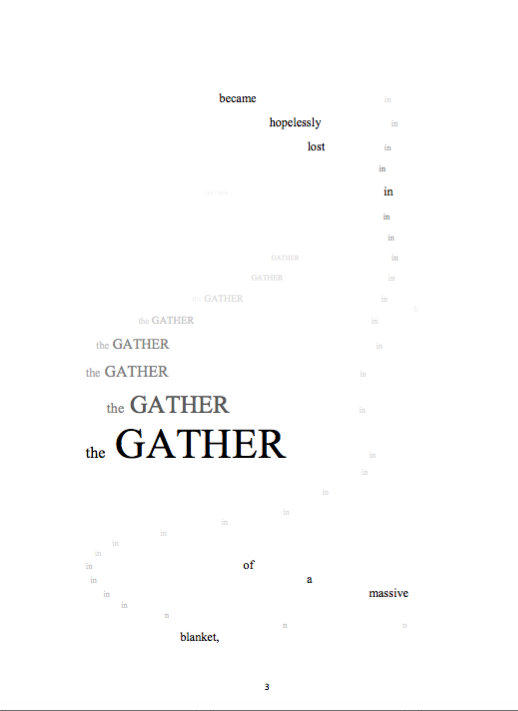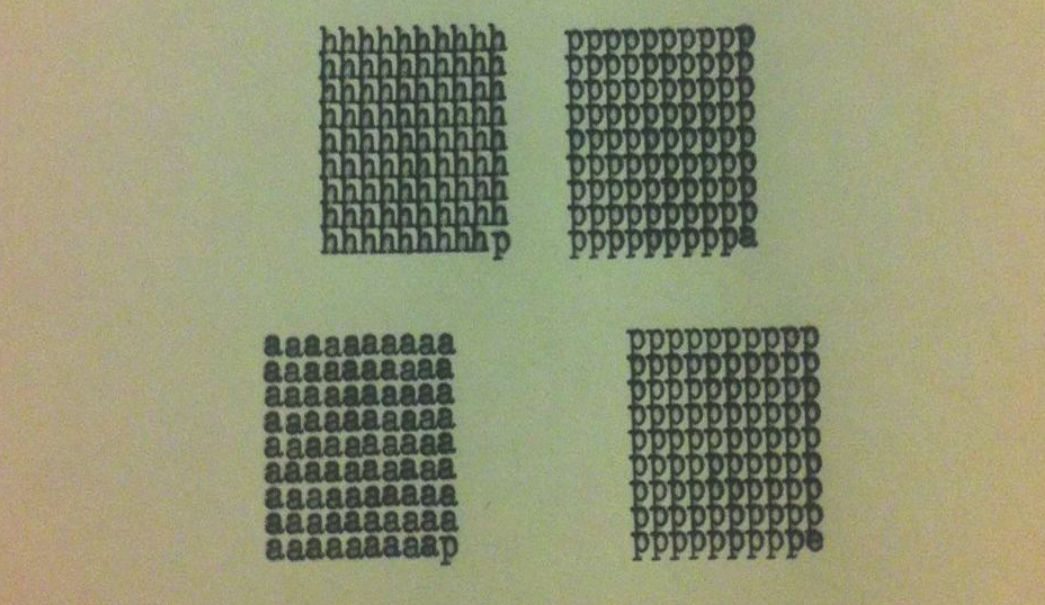March 2016
Showcasing new writers in China. Last updated March 29, 2016.
TOUCHPAPER
An original form by Chris Warren
Posted March 22, 2016
1. Explain.
Touchpaper came from the drive to write something protracted and sprawling that had nothing to say and one-hundred-and-one increasingly ridiculous ways in which to say it. I wanted it to be something that could be digested whole or picked-at at random, glanced at and forgotten like a photograph or that would sit in the back of the brain and be subconsciously mulled-over for days afterwards. Whilst I had no target audience in mind when writing and arranging Touchpaper, it was important to me that it was both beautiful to look at whilst also being naïve and childish in a way that might appeal to people despite themselves. Saying that, like all of us who do anything like this really, I wrote it for myself.
2. What was the process of creating this? (First, how did you start?)
The first version of Touchpaper was just a linear, unpunctuated narrative, and this was how it remained for about two years. I would occasionally have a flourish in which I would add another 50 thoughts (and I still envisage the piece growing over time), but ultimately it felt like a flat failure I was just writing in order to assuage some childish urge. It wasn’t really until last year that it started to become something else, and given the nature of the text, it made total sense for that something else to be of a typographical nature. I had been playing around with typewriter poems for quite a few years beforeTouchpaper came along anyway, so the groundwork had already been laid. Touchpaper, however, was the first real effort I made into putting everything I’d learnt about the process into one (in)coherent lump. I still find it too large a piece to stand far enough away from to see properly, though there’s something I confess to quite liking about that.
3. What were your inspirations?
Oh, the list is a long one; Apollinaire of course; Colleen Thibaudeau; the groundbreaking work of Andrew Lloyd, Alan Ridell, Paula Claire et al back in the 70’s and the more recent work by Ottar Ormstad and Eric Zboya; Beck; Thomas Stronen; Spike Milligan; Dr Seuss; autumn. I’ve been fairly obsessed with the visual possibilities of text for some time though, so Touchpaper was more of a personal inevitability than a drive to emulate my influences.
4. How do you hope people feel or react to this piece? (Or do you not care?).
All I hope is that people do with it what they will, which might sound a bit like I don’t care, but I hope sounds a little more like I have no agenda. I wanted Touchpaper to be playful, beautiful and to have a musicality to it that might appeal to anyone, given a chance, and if even a snippet raises a smile or makes the reader pause briefly, then I’ll consider it a job done.
5. What else are you working on, or what other projects do you intend to start?
Well, I’m back on the open-mic poetry circuit again now, after many years off, so a lot of my brain space is taken up with trying to write things with a performative value, rather than a largely visual one. I’m also trying to shoe-horn some artwork into the weekends when I can, and do very much want to be working on something new andTouchpaperish, but until some mysterious benefactor with an avant-garde bent starts paying me enough to quit my day job, I am only going to have so much time.
READ ARCHIVE
Scan to follow us on WeChat! Newsletter goes out once a week.








